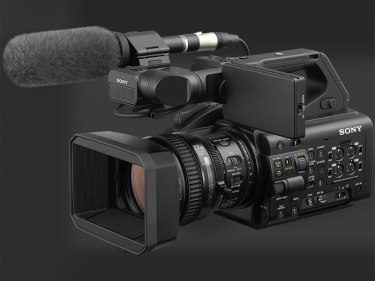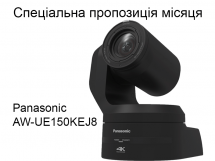| Українська | English | |||||||||||
|
|||||||||||
| News | About company | Service-centre | OB Van/SNG Rental | NextGen Energy Solutions | Contact us |
|
|
Engineering Service, Inc.
» News News Sony has announced the launch of the PXW-Z300, its latest flagship handheld XDCAM camcorder. It comes fully laden too, with 1/2-inch 4K 3-CMOS Exmor R sensors, the latest BIONZ XR image processing engine, and a dedicated AI-processing unit. Alongside that, you have an Electronic Variable ND filter, high-quality 4K 60p recording, AI-powered subject recognition for precise autofocus performance, a newly introduced articulating Flexible LCD Arm for adaptable capturing styles, and a neat Side V-Mount that allows smartphones or data transmitters to be securely attached.
With availability planned for autumn 2025, Sony reckons this is a good fit for pretty much anywhere that demands a camcorder, including news, sports, corporate, events, documentary, live programming, and reality programmes. Perhaps more than all that, by supporting the C2PA standard for recording authenticity information, the PXW-Z300 is the world's first camcorder capable of recording video with embedded digital signatures. This feels like an important inflection point for the technology. It is news organisations that currently need to be able to get on top of content reliability with the most urgency, and getting the C2PA tech into the form factors they use can only be a good thing. There are some caveats here, though. The C2PA tech is going to require a separate upgrade license. This license is available in limited regions and is compatible with the MP4 video format. Imaging Performance and Operation The PXW-Z300 features 1/2-inch back-illuminated 4K 3-CMOS Exmor R sensors and the BIONZ XR image processing engine, enabling excellent colour separation, , “F123 sensitivity” (specific low-light performance metrics weren’t detailed in the announcement), and 4K 60p recording. It offers standard support for MXF file recording in formats adopted by the XDCAM series, such as MPEG HD422, XAVC Intra (4K/HD 4:2:2 10bit), and XAVC Long (4K 4:2:0 8bit/HD 4:2:2 10bit), as well as MP4 proxy recording in HEVC. The camera also accommodates diverse looks. In addition to S-Cinetone, ITU709, and 709tone available in Sony’s Cinema Line series, XDCAM, and HDC series, it supports HLG Live, HLG Mild, HLG Natural, and user 3D LUTs. Users can import custom 3D LUTs (.cube files) from memory cards. Dual card slots support both CFexpress Type A and SDXC UHS-II/UHS-I memory cards. That 17x optical zoom lens has a F1.9 constant maximum aperture and three independent manual control rings for traditional camera operation. It delivers a wide focal-length range of 30.3–515 mm (35 mm full-frame equivalent) with a constant maximum aperture of F1.9 throughout the zoom range. The digital extender increases maximum magnification up to 4x in HD (1.5x in 4K) while maintaining close to original image quality. Additionally, the camera is equipped with an Electronic Variable ND filter that seamlessly adjusts transmission from 1/4 to 1/128, along with optical image stabilization. This should allow for smooth brightness adjustment and stable capture when moving between locations with varying light conditions, such as from bright outdoor areas to dim interior spaces. That dedicated AI-processing unit in addition to its image processing engine is fairly eye-catching for a camcorder. This enables high-precision subject (human) recognition based on face, eye, skeletal structure, and posture information. The system can maintain autofocus on subjects even when they are facing away from the camera or wearing facial coverings. It also features an auto-framing function that automatically adjusts composition to keep human subjects centred in the frame. Picture Cache Record continuously buffers images in the camera’s internal memory before recording starts, so definitive moments aren’t missed in news-gathering or nature footage, while minimising media consumption. The camera also features a 3.5-inch high-brightness LCD monitor with approximately 2.76 million dots. This is significantly brighter than on its predecessor, the discontinued PXW-Z280. It also incorporates the newly developed Flexible LCD Arm with three-axis movement, which allows flexibility in adjusting the monitor's position and angle to accommodate various shooting styles. Operators can adjust the viewing distance when capturing content with the camera on their shoulder, position the LCD monitor at the camera's optical center for stable waist-level capture, or flip it forward for self-recording. Networking and Connectivity Elsewhere the PXW-Z300's network functionality has been enhanced through improved communication device integration, which supports modern production workflows that utilize 5G and cloud technologies. This enables live streaming from shooting locations and efficient file transfer over networks. The camera supports the latest workflows utilizing 5G and cloud technologies, allowing immediate transfer of recorded material from shooting locations and live streaming via smartphone or Wi-Fi/wired LAN connections. For proxy material transmission at lower resolutions, the camera newly supports the HEVC codec, enabling higher quality and compression rates. Interestingly, it can also transfer clips in chunk format (segmented recording) during shooting. This eliminates the need to remove media and transfer material after shooting, allowing editing to begin as material arrives. Common video streaming protocols including RTMP/RTMPS and SRT are supported, enabling live broadcasting from remote locations. By attaching Sony’s PDT-FP1 Portable Data Transmitter (sold separately) to the Side V-Mount and connecting it to the camera, users can simplify integration and achieve a more stable transmission of video material. Sony’s C3 Portal and Ci Media Cloud services are supported. Oh, and that Side V-Mount will also handily mount anything including a smartphone, mobile battery, audio receiver, or other third-party accessory via a 1/4-type screw adaptor. Live streaming with multiple cameras is possible when combined with Sony’s M2 Live Cloud Switcher. The camera is also compatible with Sony’s mobile application "Monitor & Control," which supports multi-camera shooting by allowing angle confirmation, camera settings adjustment, and remote operation from smartphones or tablet devices. Audio Additionally, the camcorder enables the recording of up to four channels of audio, including shotgun microphones and Sony’s UWP-series of wireless microphones, via XLR inputs and the Multi Interface shoe. Future support will provide proxy 4-channel audio recording.
« To the list of news |
|
|||||||||||||||||
 |
+38 (044) 593-18-20 +38 (073) 593-18-20 +38 (096) 532-96-82 +38 (095) 532-96-82 Service center Telegram @Engineer_Service |

|
|
|||||
 |
e-mail: engineer-service.tv 15 Vavylovykh str., Kiev, 04060, Ukraine Authorized service centre of Panasonic, Sony, JVC, Fujinon, Canon |
|||||||







